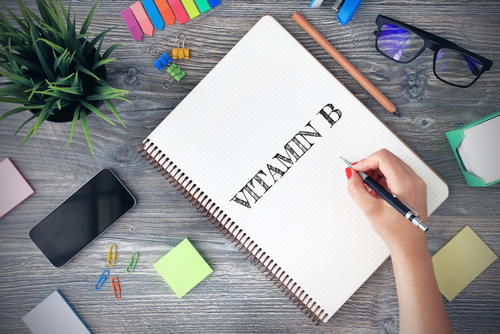Get to know the B’s!
Getting to know the Vitamin B family is definitely not hard to do, but sorting through it all and making sense of it all can be. It is a wonder that these water-soluble micronutrients are only needed in trace amounts by our body to work their magic because they fill such a systemic role in the day to day function of our body.
The vitamin B family includes 8 individual vitamins; B1 (Thiamine), B2 (Riboflavin), B3 (Niacin), B5 (pantothenic acid), B6 (pyridoxine), B7 (Biotin), B9 (Folic Acid) and B12 (Cobalamin). While the whole vitamin B family supports the adrenal glands; providing a calmer nervous system, aid in energy production and in the metabolism of macronutrients; protein, carbohydrates and fats, they all play a very unique role in keeping our body functioning at an optimal state.
Here are a few of the unique roles for each B vitamin:
B1 (Thiamine) – B1 helps the body turn food into energy by playing a critical role in the metabolic cellular production of the energy. The nervous system is supported by the B1 vitamin as it assists in protecting the nerves and by forming neurotransmitters that relay messengers of information from one cell to another.
Food sources include: oats, peas, nuts, beans, seaweed (spirulina), yeast, beef, pork
B2 (Riboflavin) – B2 has many functions beyond its energy production. They also assist in the recycling of glutathione (a powerful antioxidant in the body) which aids in preventing free radical damage and assist in the production of red blood cells.
Food sources include: cheese, almonds, beef, hard boiled eggs, mushrooms, sesame seeds, spinach
B3 (Niacin) – B3 increases the health of our cardiovascular system by decreasing the risk of atherosclerosis. It does this by reducing our LDL; “bad” cholesterol and raising our HDL; “good” cholesterol in our blood.
Food sources include: Salmon and tuna, eggs, leafy vegetables, broccoli, tomatoes, carrots, sweet potatoes, avocados, nuts, and mushrooms
B5 (Pantothenic Acid) – B5 is found in all living cells and works in the metabolism of macronutrients as a part of a coenzyme; coenzyme A (CoA). B5 has more recently become known as the “anti-stress” vitamin due to its positive effects on the adrenal glands. The adrenal glands play a major part in numerous functions of the body.
Food sources include: mushrooms, liver, avocados, beans and legumes, certain nuts and seeds, raw milk, and eggs
B6 (Pyridoxine) – B6 is involved in the production process of GABA, serotonin, norepinephrine and histamine all which have significant roles in our body. B6 also assists in the production of antibodies and of red blood cells, which assist in our immune system and in the oxygen delivery to all the cells in our body.
Food sources include: sunflower seeds, pistachios, turkey, chicken, avocados, bananas
B7 (Biotin) – B7 must be present to convert macronutrients into energy for the body. Biotin is a key component in skin and hair health and is routinely added to beauty products although it is better utilized when ingested then when applied to the skin.
Food sources include: almonds, sweet potato, eggs, berries, fish, tomatoes, oats
B9 (Folic Acid) – B9 plays a key role in red blood cell production and in the growth and development of all cells. This particular B vitamin is fundamental during pregnancy and in the development of a healthy nervous system.
Food sources include: green leafy vegetables; kale, spinach, chard, beet greens
B12 (Cobalamin) – B12 is the leading cause of deficits in the adult population and that is a cause of concern because it plays a key role in nervous system health and the production (along with B9) of red blood cells.
Food sources include: Shellfish, beef, fish, soy, cheese, eggs
Now that you are familiar with the B family, eat a variety of b rich foods to ensure you are getting your daily dose!
Amy


